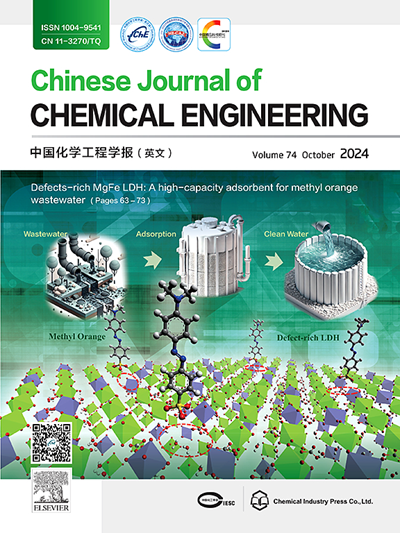Evaluation of live Cryo-ECT system for liquid nitrogen–vapor nitrogen flow
IF 3.7
3区 工程技术
Q2 ENGINEERING, CHEMICAL
引用次数: 0
Abstract
A cryogenic visible calibration and image evaluation facility (VCCIEF) was constructed to assess the effectiveness of electrical capacitance tomography systems in cryogenic conditions, known as Cryo-ECT. This facility was utilized to conduct dynamic, real-time imaging trials with liquid nitrogen (LN2). The actual flow patterns were captured using a camera and contrasted with the imaging outcomes. The capacitance data collected from these experiments were subsequently processed using three distinct methods: linear back projection, Landweber iteration, a fully connected deep neural network, and a convolutional neural network. This allowed for a comparative analysis of the performance of these algorithms in practical scenarios. The findings from the LN2 experiments demonstrated that the Cryo-ECT system, when integrated with the VCCIEF, was capable of successfully executing calibration, generating flow patterns, and performing imaging tasks. The system provided observable, clear, and precise phase distributions of the liquid nitrogen–vaporous nitrogenflow within the pipeline.
液氮-蒸气氮流动的冷冻电痉挛系统评价
为了评估低温条件下电容层析成像系统(Cryo-ECT)的有效性,建立了低温可见校准和图像评估设施(VCCIEF)。该设备用于使用液氮(LN2)进行动态、实时成像试验。实际的流动模式是用相机捕捉的,并与成像结果进行对比。从这些实验中收集的电容数据随后使用三种不同的方法进行处理:线性反投影、Landweber迭代、全连接深度神经网络和卷积神经网络。这允许在实际场景中对这些算法的性能进行比较分析。LN2实验的结果表明,当与VCCIEF集成时,Cryo-ECT系统能够成功地执行校准,生成流型并执行成像任务。该系统提供了可观察的、清晰的、精确的液氮-蒸汽氮在管道内流动的相分布。
本文章由计算机程序翻译,如有差异,请以英文原文为准。
求助全文
约1分钟内获得全文
求助全文
来源期刊

Chinese Journal of Chemical Engineering
工程技术-工程:化工
CiteScore
6.60
自引率
5.30%
发文量
4309
审稿时长
31 days
期刊介绍:
The Chinese Journal of Chemical Engineering (Monthly, started in 1982) is the official journal of the Chemical Industry and Engineering Society of China and published by the Chemical Industry Press Co. Ltd. The aim of the journal is to develop the international exchange of scientific and technical information in the field of chemical engineering. It publishes original research papers that cover the major advancements and achievements in chemical engineering in China as well as some articles from overseas contributors.
The topics of journal include chemical engineering, chemical technology, biochemical engineering, energy and environmental engineering and other relevant fields. Papers are published on the basis of their relevance to theoretical research, practical application or potential uses in the industry as Research Papers, Communications, Reviews and Perspectives. Prominent domestic and overseas chemical experts and scholars have been invited to form an International Advisory Board and the Editorial Committee. It enjoys recognition among Chinese academia and industry as a reliable source of information of what is going on in chemical engineering research, both domestic and abroad.
 求助内容:
求助内容: 应助结果提醒方式:
应助结果提醒方式:


